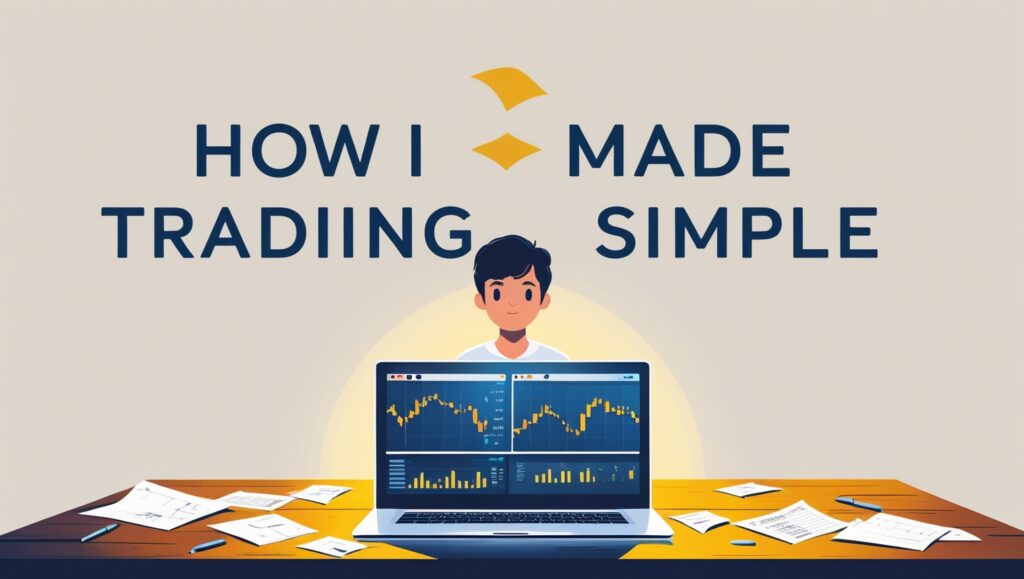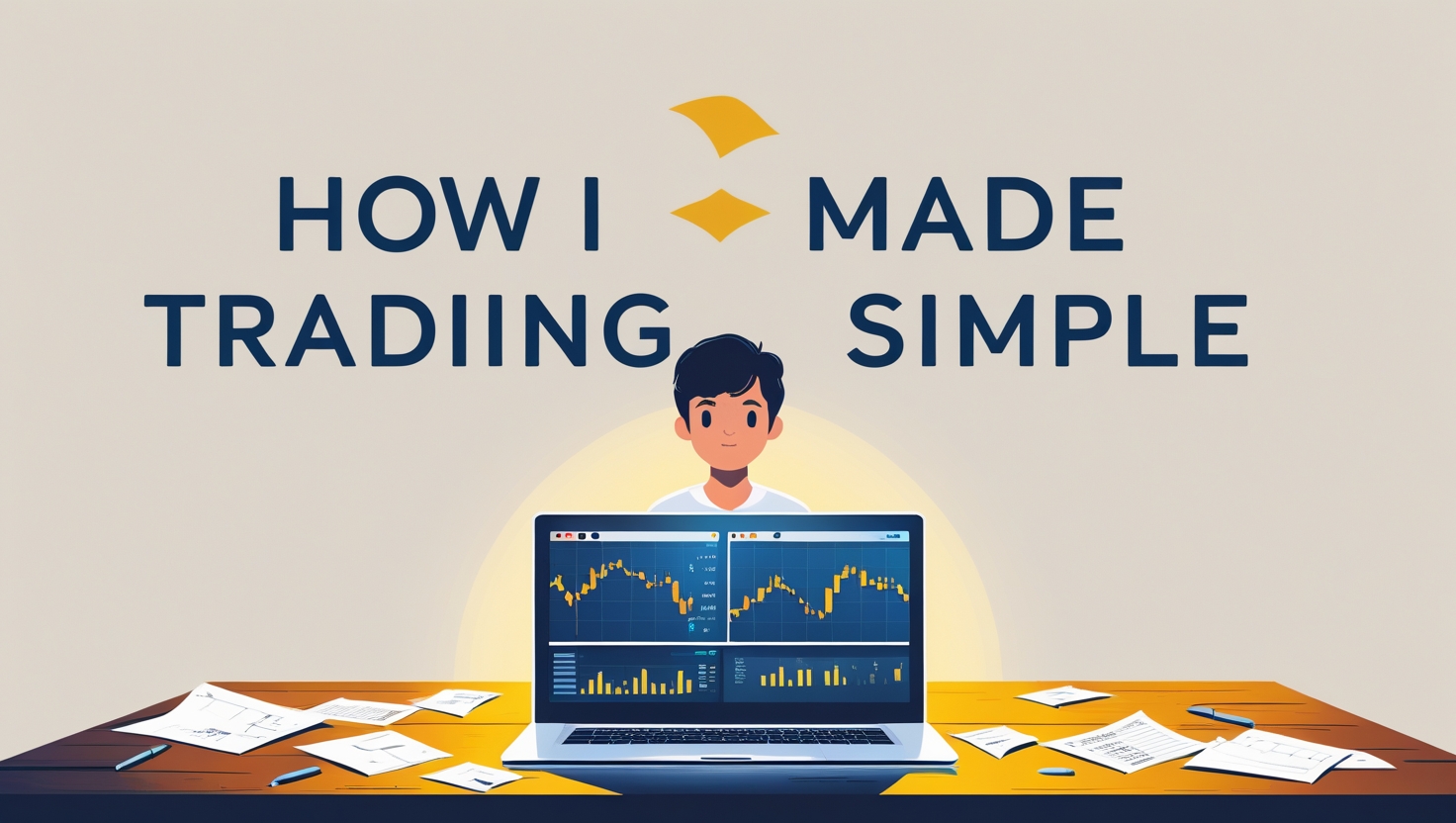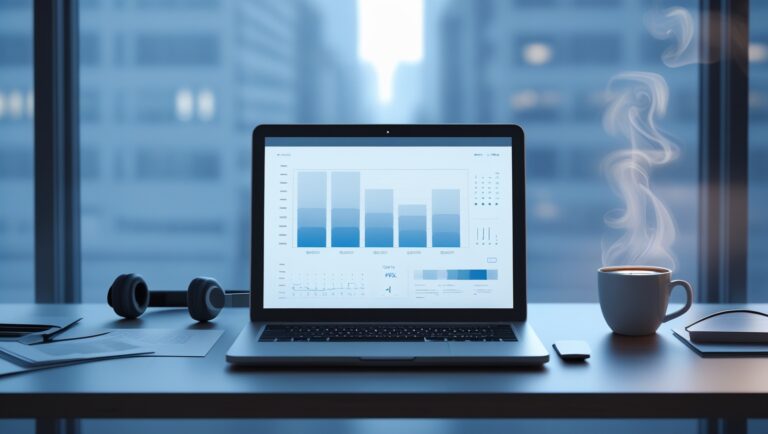How I Made Trading Simple (And Finally Started Winning)
How I Made Trading Simple (And Finally Started Winning)
When I first got into trading, I thought I needed to learn every strategy, indicator, and tool out there. I followed dozens of traders, watched endless YouTube videos, and jumped from one setup to another. But nothing clicked — and I was constantly confused. Then I did something that changed everything: I simplified my trading.
The more I simplified, the more I started winning. I didn’t need 10 indicators on my chart. I didn’t need to trade all day long. I just needed a clean strategy, a routine I could repeat, and the discipline to follow it.

Table of Contents
I Stopped Overcomplicating My Charts
I used to have RSI, MACD, moving averages, volume profiles — you name it. But all those indicators just made me second-guess my trades. Now, I use price action, volume, and key levels. That’s it. Clean charts lead to clean decisions.
I Pick a Few Stocks and Trade Them Well
I don’t scan for hundreds of stocks. I don’t chase what’s trending. Every morning, I build a watchlist of no more than six stocks — the ones that fit my criteria. I talk about exactly how I do that in my ebook.
When you stop chasing and start focusing, trading becomes way easier.
I Trade Only During the Best Hours
I used to stare at charts all day long. It was exhausting — and unproductive. Now, I only trade during the first hour of the market. That’s when momentum is highest, volume is real, and my edge is strongest.
Once that window closes, I’m done. That’s how I stay consistent and avoid burnout.
I Use the Same Setups Every Week
There’s no magic strategy. I just repeat what works for me — simple setups like breakouts with volume, pullbacks to support, and key level rejections. The more I repeat them, the better I get. I’m not trying to master everything — just my thing.
I Don’t Rely on Alerts or Other People
The moment I stopped depending on alerts and started trusting my own process, everything changed. I don’t need a guru’s callout — I trust the preparation I do before 9:30AM. That’s the same process I outline in detail in my ebook.
I Focus More on Risk Than Profit
This shift was critical. I used to enter trades thinking only about how much I could make. Now, I ask: how much am I willing to lose? That mindset keeps me safe, calm, and consistent.
When you respect your risk, your account grows naturally.
Simplicity = Confidence
Once I simplified my strategy, I felt more in control. I wasn’t overwhelmed by options or scared of missing out. I knew exactly what I was looking for — and if I didn’t see it, I didn’t trade. That clarity gave me real confidence.
My Routine Made All the Difference
Every day, I repeat the same steps:
• Review the market
• Pick 4–6 stocks
• Plan entries and exits
• Trade the first hour
• Walk away
That routine is how I stay consistent and pay my bills. And yes — I explain it all inside my ebook, step-by-step.
Want to Trade Without the Stress?
If you’re tired of feeling overwhelmed by trading, I get it — I’ve been there. That’s why I created the ebook. It’s everything I wish I had when I started: a simple, repeatable strategy that actually works — and doesn’t require complicated tools, expensive software, or all-day screen time.
It’s the system I use to trade just a few times per week and still pay for rent, groceries, and more.
The biggest lie I believed at first was that trading had to be complicated to be effective. I thought the more advanced the strategy, the better the results. But that mindset only delayed my growth. Once I stripped away the noise, I could finally see what mattered.
I used to jump between indicators like RSI, VWAP, Bollinger Bands — but all they did was give me conflicting signals. Now I stick to price action and volume, and I trust what the chart is showing me in real time.
My setups are so simple now that I can explain them in one sentence. I look for stocks with volume, news, and a clean breakout or breakdown level. That’s it. I plan my entries, exits, and risk before the market even opens.
There’s freedom in having a simple strategy. I’m not constantly refreshing Discord or chasing Twitter alerts. I trust the system I’ve built — and it’s the same one I teach inside my ebook.
I also stopped trying to trade like a hedge fund. I realized that I don’t need to make $1,000 every day. I just need to consistently grow my account over time and avoid the big losses. That’s how I stay in the game long term.
One of the hardest things for me was accepting that I didn’t need to trade every single day. Some days, the best trade is no trade at all. I now only take setups that are clean and match my plan — and I walk away when they’re not there.
I also began focusing on one strategy at a time. Instead of trying to master everything, I got really good at identifying momentum breakouts. That focus helped me become more confident and selective with my trades.
I backtest every change I make. When I tweak something, I test it for a month to see if it improves my results. If not, I toss it. This approach keeps my strategy lean and avoids adding unnecessary complexity.
Risk management is part of keeping things simple too. I risk the same amount on every trade — usually 1–2% of my account. That makes calculating position size automatic and removes emotion from my decision-making.
What made everything easier was creating a repeatable morning routine. I wake up, scan the news, pick 4–6 stocks with volume and catalysts, set levels, and prepare mentally. By 9:30AM, I’m ready — no guessing, no reacting.
A lot of traders overthink and burn out. I don’t. I made a plan that’s sustainable. That’s why I wrote my ebook: to help people stop guessing, start trading with confidence, and actually pay their bills like I do.
If I could tell my past self one thing, it would be this: Simple wins. The less clutter in your trading, the more consistent your results. Focus on one setup. Build a watchlist. Trade your plan. Walk away. That’s what I do — and that’s why it works.

Stay ahead in the stock market! Subscribe to our newsletter and receive exclusive stock flow reports, trading insights, and actionable tips directly in your inbox. Join thousands of traders who get our updates first.







